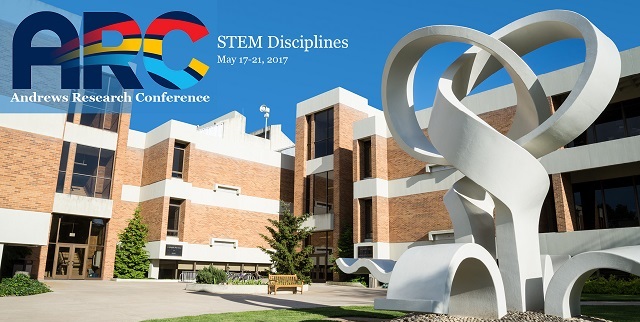Screening of Hybrid Heterocyclic Boronic Acids and Nonboronic Acid Aldehydes as Potential Anticancer Agents.
Presenter Status
Graduate Student, Biology Department
Presentation Type
Oral Presentation
Session
C
Location
Chan Shun 108
Start Date
19-5-2017 9:50 AM
End Date
19-5-2017 10:10 AM
Presentation Abstract
Breast cancer is one of the most frequently occurring cancers and the second leading cause of cancer-related deaths in women. Several risk factors and genetic mutations play a significant role in its occurrence as well as influence the development and implementation of anticancer therapy. This research is focused on the synthesis and anticancer evaluation of novel hybrid organic compounds containing the heterocycles rhodanine and 2, 4-thiazolidinedione covalently linked to boronic acids or nonboronic acid aldehydes. The synthesis of these compounds were accomplished by calcium oxide-promoted Knoevenagel condensation followed by NMR and IR spectroscopic analysis for structure confirmation. Eleven compounds were screened for anticancer effects on the AU565 HER-2/neu overexpressing breast cancer cell line by using the CellTiter-Blue® cell viability assay. Six of the compounds showed a decrease in cell viability which suggest anticancer activity while five of the compounds showed an increase in cell viability suggesting no anticancer activity. Overall, the results suggest that the position of the boronic acids and nonboronic acid aldehydes on the aromatic ring of the hybrid compounds may play a role in determining anticancer activity.
Biographical Sketch
Jemma McLeish
Graduate Student, Biology Department
Andrews University
Screening of Hybrid Heterocyclic Boronic Acids and Nonboronic Acid Aldehydes as Potential Anticancer Agents.
Chan Shun 108
Breast cancer is one of the most frequently occurring cancers and the second leading cause of cancer-related deaths in women. Several risk factors and genetic mutations play a significant role in its occurrence as well as influence the development and implementation of anticancer therapy. This research is focused on the synthesis and anticancer evaluation of novel hybrid organic compounds containing the heterocycles rhodanine and 2, 4-thiazolidinedione covalently linked to boronic acids or nonboronic acid aldehydes. The synthesis of these compounds were accomplished by calcium oxide-promoted Knoevenagel condensation followed by NMR and IR spectroscopic analysis for structure confirmation. Eleven compounds were screened for anticancer effects on the AU565 HER-2/neu overexpressing breast cancer cell line by using the CellTiter-Blue® cell viability assay. Six of the compounds showed a decrease in cell viability which suggest anticancer activity while five of the compounds showed an increase in cell viability suggesting no anticancer activity. Overall, the results suggest that the position of the boronic acids and nonboronic acid aldehydes on the aromatic ring of the hybrid compounds may play a role in determining anticancer activity.



